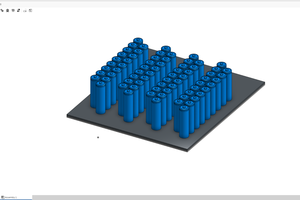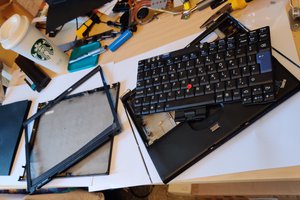Before we dive into the details I'd like to address that this project in a work in progress due to some findings after testing the first design. That being said I am redesigning the board to accommodate some changes I will go over. I covered everything in my video so give it a watch if you'd like :)
I have never been a fan of battery powered controllers only because you need to replace the batteries. Sony hit the nail on the head with their designs so I figured after a few days of not using a wired controller I'd give it a go and design a rechargeable pack myself.
I could've bought a pack but that isn't any fun. Nor is dealing with ni-cad batteries or paying more than its worth so I set out to remedy the issue myself!
One thing I have learned over the years is that with electronics you never should expect something to go according to plan. Theories and actuality are two different worlds in terms of application. (I had to upload the schematic in parts because eagle exports looked horrible)
When I set out to make this project I did my research and used real life data to implement into my design. However, shortly after soldering all the components on and testing it I was left with a problem that made me have to redesign the board.
When I designed the board I had a few goals in mind. I wanted to charge a lithium ion battery using the Xbox controllers 5 volt input from the micro USB and discharge the battery through a 3.3 volt buck/boost converter. I also threw in my rapid fire design just because even though I am not using it.
My idea was to use a 3.3 volt buck/boost converter to emulate a fully charged 2 double A battery setup. The converter would knock down the freshly charged 4.2 lithium ion battery voltage to 3.3 volts and it would step up the battery voltage to 3.3 once it dropped below. The converter I used ended up dissipating too much heat. Even with an added heat sink. This not only made the board warm but drew more current from the 700 mah battery. I referenced the data sheet and was within the limits but had to rethink things.
After I discovered this problem I messed around with my controller to see how much voltage it could take. To my surprise my controller ran just fine at 4.2 volts. This discovery cut out the need to use a buck/boost entirely. I ended up modding my board to discharge the battery into the controller rather than the buck boost.This also got rid of a switch I would have used if things worked as intended.
The controller has a 5 volt input from USB and a battery cavity. The battery cavity delivers 3 volts to the controller which is 'close' to a lithium ion battery. For those wondering why I was surprised to see my controller run fine at 4.2 volts; The 5 volt USB and 3 volt battery input are not ran in parallel. So I thought a voltage higher than 3 in the battery cavity would present problems. I could've used a 5 volt boost to the micro USB but that wasn't necessary since the lithium ion voltage was close to 3 already and the controller had a cut off voltage of 1.8 (ish?).
With this information gathered I am now designing a "v2" board. One that will charge and discharge the battery and have my rapid fire mod as well. With the current board I designed it using a controller that only charged the battery. With lithium ion batteries it is imperative to discharge them safely. The reason I didn't use a controller that can do both is because the battery I used had a protection circuit in it. This cut cost but it will be added in v2.
I am not providing gerber files YET because this isn't a design I back fully. This is just to show the idea I want to achieve. While it works after modding, it doesn't work how I want it to.
Aside from the board being functional I want to design it better in terms of routing. I made this board using eagle and did it late at night and forgot to route a few power and ground etches the same width as you can see looking at the board image. It doesn't impact the board but I don't...
Read more » Solderking
Solderking
 Tron9000
Tron9000
 Hulk
Hulk
 AVR
AVR
 Sean
Sean